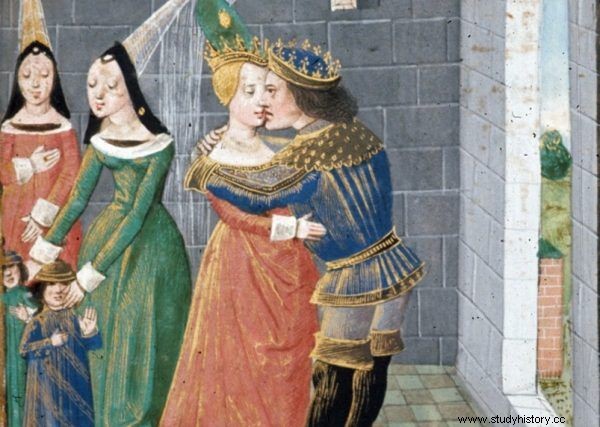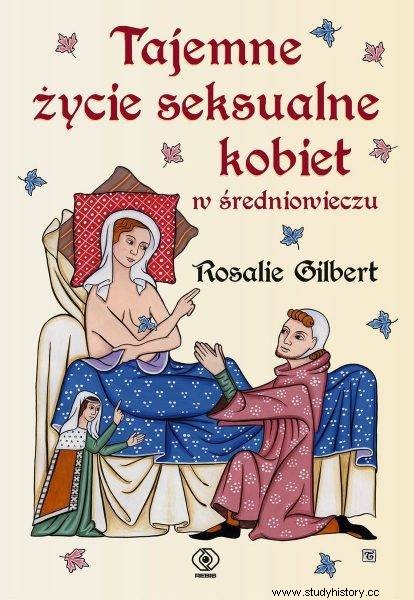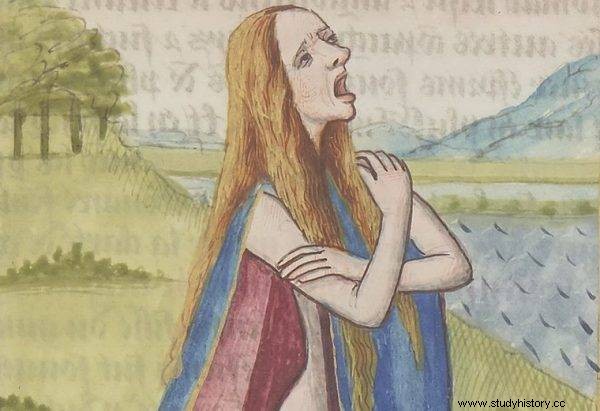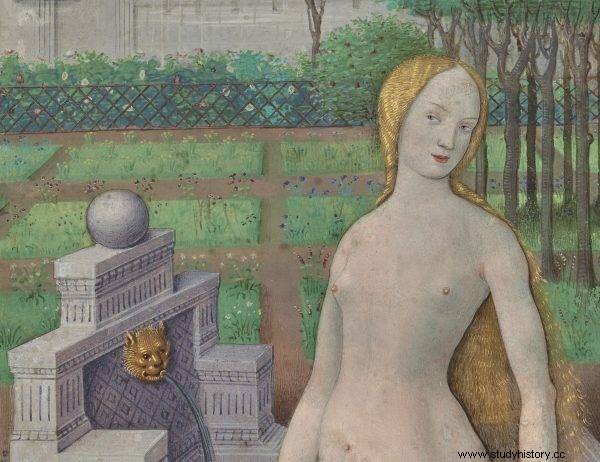They were officially condemned, but in practice their services were eagerly used (this also applied to priests). In Paris, prostitutes even had their own guild!
It is not without reason that prostitution is called "the oldest profession in the world". Therefore, it should come as no surprise that ladies of gentlemen sold their charms also in the Middle Ages.
What about the Church, which then especially liked to meddle in the private affairs of the faithful?
Having goodness is not a sin
In medieval Catholic society - at least in theory - there was no place for prostitutes (well, unless for those converts). Since any sexual activity which did not result in the spouses conceiving a child was considered sinful women who had sex for money were also sinners.
In practice, however, the ladies of light morals were not assessed so severely. In fact, the Church not only tolerated them, but even recognized their right to earn money. Rosalie Gilbert writes in the book "The Secret Sexual Life of Women in the Middle Ages":
If a woman became a prostitute and offered her body for money, she sinned on many levels, but at times this was not seen as a very bad thing. It was fundamentally different from rape because the woman consented to sex and she was paid for it, so both sides had reason to be satisfied (...).

Any sexual activity that did not result in the conception of a child by the spouses was considered sinful
If such a relationship was voluntary, how could it be wrong in God's eyes? After all, it was just like hiring a woman for any other job. (...) A sin could arise if one of the parties felt aggrieved in this transaction .
Of course, there were also those who adopted the principle of zero tolerance - such as Saint Louis IX of France (sic!), Who tried to ban prostitution in the mid-thirteenth century. As you can guess, to no avail.
Read also:Virginity in the Middle Ages
Out of law
Another thing is that women's propensity to prostitute themselves was considered a trait due to their weak character. Accordingly, their clients, pimps and brothels faced heavier penalties than the ladies themselves involved in the sinful dealings.
On the other hand, prostitutes did not enjoy many privileges - among other things, they could not inherit property, bring charges to court or even personally answer to charges in proceedings against them. In this respect, they were somewhat outside the law, though not completely.

The text was created, among others based on the book "The Secret Sexual Life of Women in the Middle Ages" by Rosalie Gilbert, which has just been released by Rebis.
Francis and Joseph Gies write:
Prostitution flourished from time immemorial. Until the late Middle Ages, it was legally regulated, especially in large cities, at markets and fairs, which gave maidservants, traders and peasant daughters an opportunity to earn an extra penny.
In many places there was an order that prostitutes should be distinguished by their clothes - hoods or bands - or were forbidden to wear jewels or certain ornaments.
The restrictions depended on local arrangements - and so in Bristol, harlots could not stay within the city walls (this also applied to lepers), in London they were allowed to walk only on some (strictly defined) streets, but in Paris they allegedly created their own guilds. His patron was, of course, St. Maria Magdalena.
Read also:Women of weak character and light manners. Did medieval prostitutes have any rights?
Forced prostitution
How many medieval women chose to engage in harlotry? Rosalie Gilbert estimates that at the beginning of the 15th century, among the 75,000 inhabitants of Paris, there were about three thousand ladies of light manners. In 1500 in Rome 7,000 were counted, and in Venice over 11,500 out of 150,000 citizens.
What was the driving force behind the girls who decided to pursue a "career" of a prostitute? In the book "The Secret Sexual Life of Women in the Middle Ages" we read:
Most of the women who turned to prostitution did so out of poverty and lack of other means of survival. Others could not count on a good marriage because of previous free behavior or mere slander (...).
Poor women forced into this activity were often abused and were victims of physical violence by clients and brothel owners . As you can imagine, the servants were also sometimes forced into prostitution.

Poor women forced into this activity were often abused and became victims of physical violence by clients and brothel owners.
Rosalie Gilbert cites the case of Isabel Lane, who lived in the 15th century in London. An elderly woman who employs a girl on her farm - a certain Margaret Hathewyk - pampered her to Lombard Street residents and "other unknown men who divert her against Isabel's will" . However, there were many more similar stories.
Also read:Was orgasm a sin in the Middle Ages? That's how sex was treated 800 years ago…
Back on track
Basically, once a girl entered the path of prostitution, it was extremely difficult for her to get off of her. There were, however, some openings that allowed the former harlot to become a decent woman again.
The first way was - following the example of St. Mary Magdalene - conversion. Already in the 11th century, the Byzantine emperor Michael IV Paphlagon, built a monastery in Constantinople and announced that women of light morals could wear religious habits there . The chronicler Michał Psellos reported that they could have happened:
to get rid of worries about livelihoods. [...] As a result, a huge swarm of women came to live in the attics [of prostitutes]. Along with putting on the habit, they also changed their character.
In turn, in 1227 Pope Gregory IX blessed the Order of Saint Mary Magdalene, founded by canon Rudolf of Worms, who wanted to turn "women of light morals" from the path of sin. In any case, there were more gatherings for women workers - such as the fourteenth-century order of the repentant Saint Catherine in Montellier.

Basically, once a girl entered the path of prostitution, it was extremely difficult for her to get off of her.
The alternative solution was marriage - provided of course there was one willing and you were ready to break with your profession. And here, however, the Pope came to "help". In 1198, Innocent III announced that marrying a prostitute in order to straighten the paths of her life was an act of mercy.
Pimps?
Seeming to be a moral indicator for ordinary mortals, the medieval Church, in a way, considered prostitutes to be a necessary evil. Naturally, he advised against using their services, but also turned a blind eye to those who failed to contain their lust.
The more so because they were present among the clergy themselves. The meticulous records of a woman running a brothel in Dijon show that the clergy constituted as much as one-fifth of the clientele of the tabernacle which she supervised.
In fact, some priests went even further. As described by Rosalie Gilbert in the book "The Secret Sexual Life of Women in the Middle Ages":
It was reported that the Bishop of Winchester received regular rent payments from Southwark brothels across the Thames. His ladies were known as "Winchester Geese." The enterprising bishop arranged this so that his administrators not only collected rent, but also carried out weekly inspections of women's quarters and examined their current property status.
As you can see, even in the prayerful Middle Ages, the sex business was doing very well. Only women fared badly ...
Bibliography:
- J. and J. Giesowie, The Life of a Medieval Woman , Horizon 2019 sign.
- R. Gilbert, The Secret Sexual Life of Women in the Middle Ages , Rebis 2021.
- M. Karpiński, The oldest profession in the world. History of prostitution , Iskry 2010.
- M. Psellos, Chronicle, or the history of one century of Byzantium , Ossolineum 1985.
